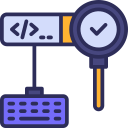Efficient Auditing with Python: A Practical Guide
Harnessing the power of Python for auditing transforms routine checks into streamlined, efficient processes. Whether in financial services, IT compliance, or operations, Python introduces automation, precision, and scalability to audit tasks. This practical guide explores methods, tools, and best practices for conducting thorough and efficient audits using Python, empowering auditors and analysts to detect issues faster and gain actionable insights with confidence.

Laying the Foundation: Why Use Python for Auditing?

Python boasts an intuitive syntax that lowers the barrier for auditors who may not have extensive programming backgrounds. Its adaptability is evident in the way it fits both simple data extraction scripts and complex data validation workflows. With its platform independence and open-source nature, Python empowers auditing teams to craft and share reusable code across departments and organizations with ease. This accessibility means that audit processes can evolve rapidly in response to changing regulatory requirements or emerging risks, making Python a foundational tool in the 21st-century auditor’s toolkit.
Automating Data Collection and Preparation
01
Streamlined Data Extraction
In the audit landscape, data often resides in diverse sources such as relational databases, Excel spreadsheets, cloud storage platforms, or web APIs. Python’s arsenal of libraries—such as pandas, SQLAlchemy, and requests—enables robust and secure data extraction regardless of source. Auditors can automate connections, queries, and downloads, ensuring they always work with up-to-date and complete datasets. This automation not only saves time but also reduces the risk of human error that comes with manual copying and data handling, directly improving audit quality.
02
Cleaning and Normalizing Datasets
Raw data is seldom ready for audit analysis. Incomplete records, inconsistent formats, duplicates, and erroneous entries are common challenges. Python’s data wrangling capabilities, particularly through the pandas library, allow audit professionals to automate the cleaning process. Scripts can be written to handle missing values, standardize formats, and validate inputs across numerous fields. The ability to quickly repeat these processes for every audit cycle ensures that auditors are always working with high-integrity, analysis-ready data, which ultimately leads to more robust audit outcomes.
03
Documenting Repeatable Processes
One of the significant advantages Python offers is the ability to encode entire data preparation and audit procedures in reusable, version-controlled scripts. Each data extraction, transformation, and validation step can be documented and reviewed, encouraging transparency and continuous improvement. Over time, auditors build a library of scripts tailored to common audit scenarios, significantly lowering the effort required for subsequent audits and ensuring consistency in methodology across time and teams. This documentation also supports compliance efforts by providing a clear audit trail of how analysis was performed.
